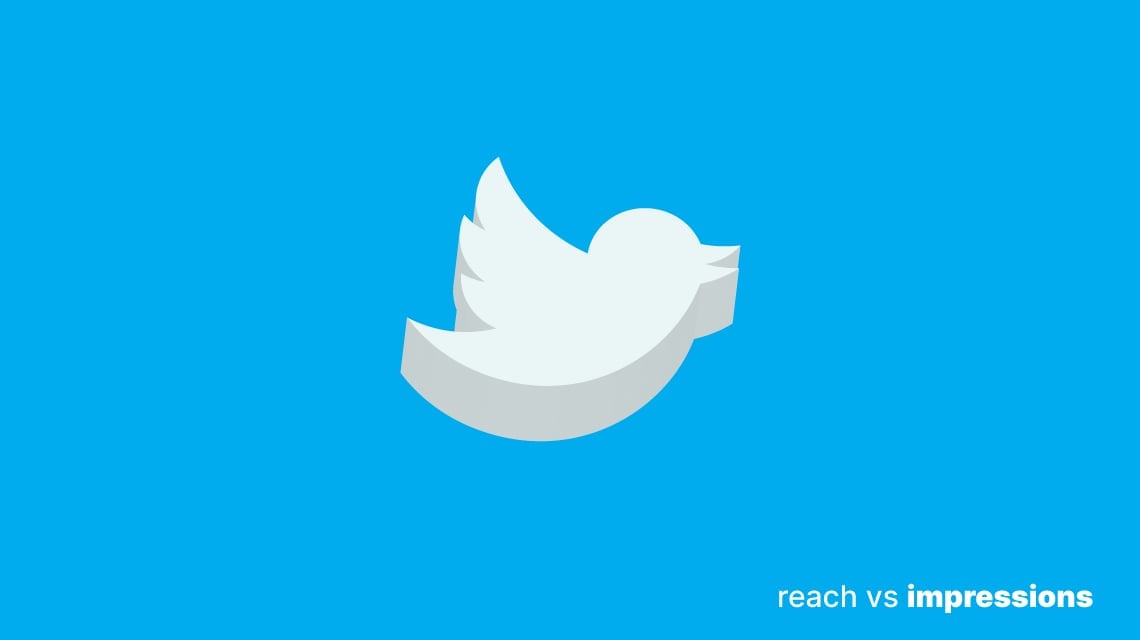
If you want a successful Twitter campaign, Twitter impressions are a fundamental metric to monitor. Understanding impressions can help you gauge your audience’s interest and boost your brand’s presence on Twitter.
Though you may struggle to understand the mysterious ebbs and flows of Twitter impressions, understanding how to track them can help you create valued content published at the right times. This will help boost your campaign’s success and turn followers into more engaged customers.
In this article, we’re going to show you what impressions are on Twitter and how to track them to create successful Twitter marketing campaigns.
Find out how quintly can help you dive deep into Twitter analytics and measure the impact of your Twitter marketing using rich data insights.
What are impressions on Twitter?
Twitter impressions are the number of times a tweet is viewed in Twitter timelines or search results. Impressions include views of an original post’s retweets. However, impressions do not include tweets viewed on third-party platforms or websites.
Twitter impressions are a key metric to help determine the efficacy of your campaign’s content and posting times. The more people who see your Twitter campaign, the higher the probability of retweets. And more engagement means you’ll have a better chance to convert followers and viewers into subscribers, buyers, or dedicated customers.
You can think of Twitter impressions as the impact a tweet has on both your followers and in the Twitter world itself.
How to calculate Twitter impressions
Twitter calculates the number of times your tweet appears in someone’s timeline or search results. But these are not unique views. So, even if one person sees your tweet multiple times, each view is considered an impression.
For example, you create an original tweet and one follower sees it 5 times: this will count as 5 impressions. Then another person sees the same tweet 2 times in a search result. You’ll now have 7 impressions for your tweet.
Twitter calculates impressions for you through Twitter analytics, which you’ll need to enable first before you can use it. In Twitter Analytics, you’ll find Twitter impressions for the past 30 days or up until your past 3,200 tweets.
Twitter impressions vs reach: What’s the difference?
You can think of Twitter reach as unique impressions. Reach counts the number of unique users who have seen your tweet. When one of your followers sees your tweet 5 times and another follower views your tweet 1 time, then you’ll have a reach of 2.
Potential reach is the total number of followers you have because, potentially, every one of your followers can see your tweet, but not all of them will. Like Facebook and Instagram, Twitter uses algorithms to curate your newsfeed, personalizing it to match your Twitter behavior.
How to calculate Twitter reach
Unlike other platforms, Twitter doesn’t calculate your reach. However, knowing your Twitter reach can help you understand the impact a tweet has on Twitter.
Let’s use an example to calculate reach. Imagine you have 80,000 followers and one of your tweets gets 1000 impressions, which seems like a significant result until you know your reach. To calculate reach, divide your tweet’s impressions by your total number of followers:
1,000 impressions/80,000 followers = 0.0125
Your 1K Twitter impressions translate into 1.25% of reach. A comparison of reach with impressions puts the success of a tweet into perspective.
How many impressions is considered ‘good’ on Twitter?
There’s no magic number considered “good” on Twitter. Statistically speaking, however, the greater your impressions are, the more likely you’ll increase engagement and followers.
As we’ve seen above, total impressions alone won’t give you the information you need to run a successful campaign. You could get 1K impressions daily, but if you lack follower interaction, like retweets, replies, or likes, and no one is converting into a follower or customer, then 1K Twitter impressions won’t bring your campaign the desired results.
Instead, when you dive into your impressions with an analytics tool like quintly, you can discover more about your followers, like when they’re most active, what they like to see, and how to influence their engagement.
How to track Twitter impressions with an analytics tool
If you want to get more eyes on your Twitter campaign, use a tool like quintly to discover how to raise your impressions. Here’s how quintly helps you track your Twitter impressions with 6 different metrics.
1. Impressions Count
The Impressions Count is a great tool to measure the progress of your Twitter campaigns.
It shows the total number of your own tweet impressions from the past month, along with a growth percentage comparing the previous month’s impressions. Bear in mind that this metric includes impressions of original content only, and not any content you retweet from other accounts. If you’re tracking multiple profiles, you’ll find the sum of all profiles’ impressions here.
Impressions Count gives you an immediate pulse on your campaign strategy. For example,
- An increase in impressions percentage can prove the efficacy of a new strategy or a newly implemented change.
- A drop in impressions percentage will tell you at a glance when you need to adjust your strategy.
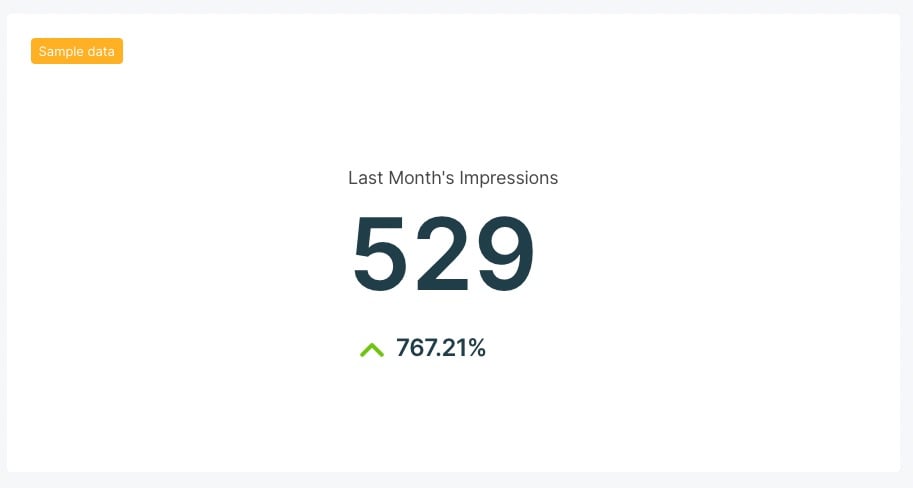
To understand why a campaign is working or not, use the next metric for a deeper dive into those impressions.
2. Impressions over Time
To have a historical view of your impressions, based on the tweet’s published date, check quintly’s Impressions over Time metric.
If you published multiple tweets on the same day, you’ll see the sum of impressions for all tweets in the graph. As with all Twitter impressions, this metric provides data up to 30 days in the past or up to 3,200 previous tweets.
You can track historical impressions for more than one profile, ideal when you want to compare your campaign to competitors. Benchmarking can provide you with valuable data to monitor your performance.
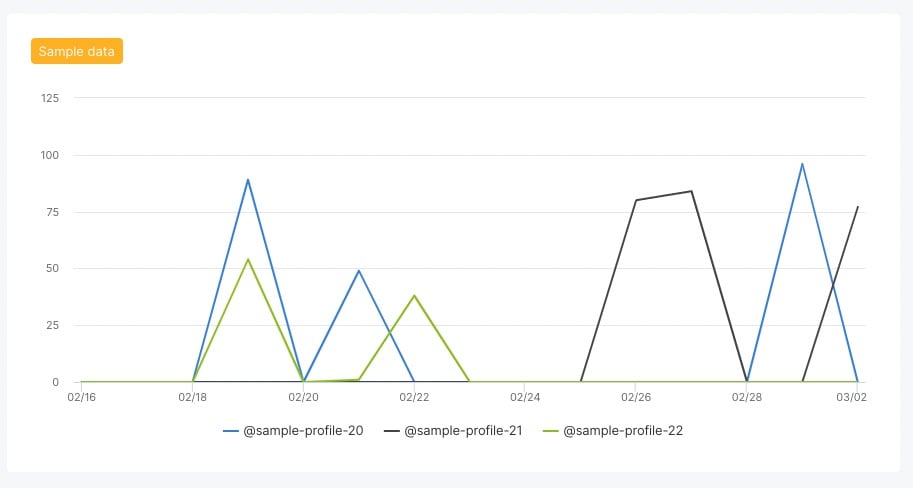
If you see a spike in impressions on a particular day, you can use this tool with other metrics, like quintly’s Impressions/Engagements Comparison, to understand which tweet captured an unusual amount of attention. And when used with Impressions Count, Impressions over Time provides a clear picture of how your original content is performing.
3. Daily Average Impressions per Tweet
The Daily Average Impressions per Tweet tool allows you to monitor your campaign’s daily performance and see at a glance which daily tweets received more Twitter impressions.
This metric takes the sum of all your impressions in one day and divides it by the number of original tweets published the same day. If you don’t publish any tweets on a given day, then the result will be zero.
As in the previous metrics, you can benchmark your campaign with competitors to gain valuable insights to hone your Twitter strategy.
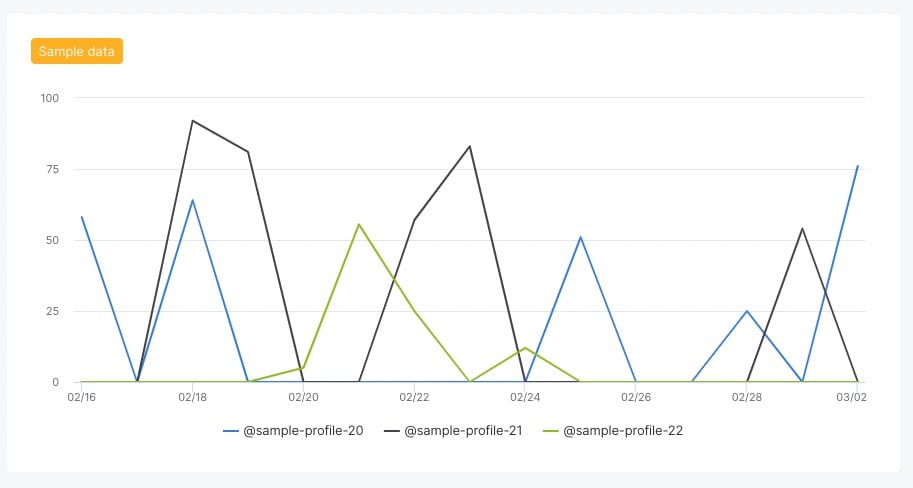
4. Impressions by Weekday
With quintly’s Impressions by Weekday, you can compare your impressions with various profiles, like competitors.
Impressions by Weekday allows you to spot opportunities, which will give you an edge on the competition.
Let’s take the sample data in the screenshot below as an example. Each color-coded column represents a different Twitter profile. We can see that Profile 22 only publishes once a week on Mondays. But we can glean information from competitor Profile 21 and suggest Profile 22 to publish tweets on Tuesdays and Saturdays to increase their impressions.
5. Impressions by Time
With Impressions by Time, you can see the performance of a tweet, a group of tweets, or competitor profiles by the day of the week and time of day. The larger the bubble appears, the more impressions earned on that date and time.
Study Impressions by Time to know which days and time frames you’re more likely to increase views on your tweets. This way, you’ll know the right time to publish future tweets to receive greater impressions.
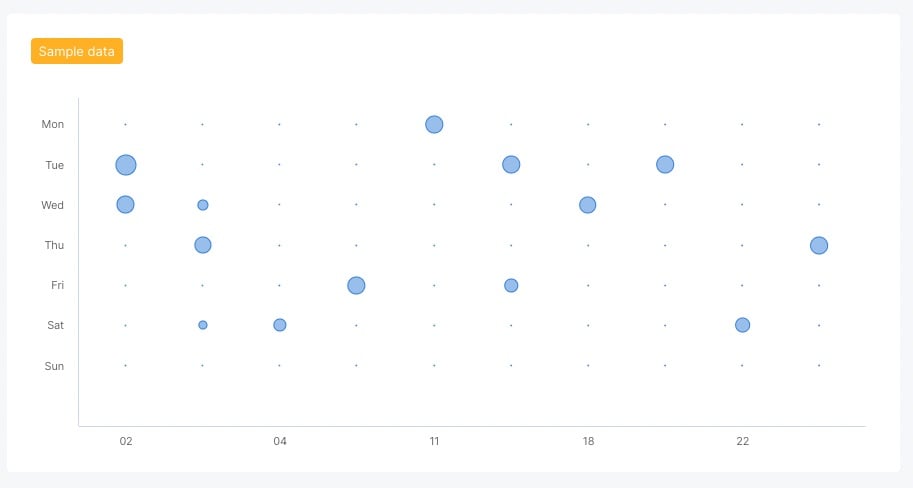
6. Impressions/Engagements Comparison
Impressions/Engagements Comparison shows how your impressions measure up with your engagements by day and time.This is your first step into converting viewers into followers or customers. As we said before, 1K impressions are good, but if no one is engaging, then your tweet had potential but it didn’t convert into actions.
Like Impressions by Time, the larger the bubble, the greater the impressions or engagements. You can analyze your own tweets, or the sum of tweets of different profiles, like competitors.
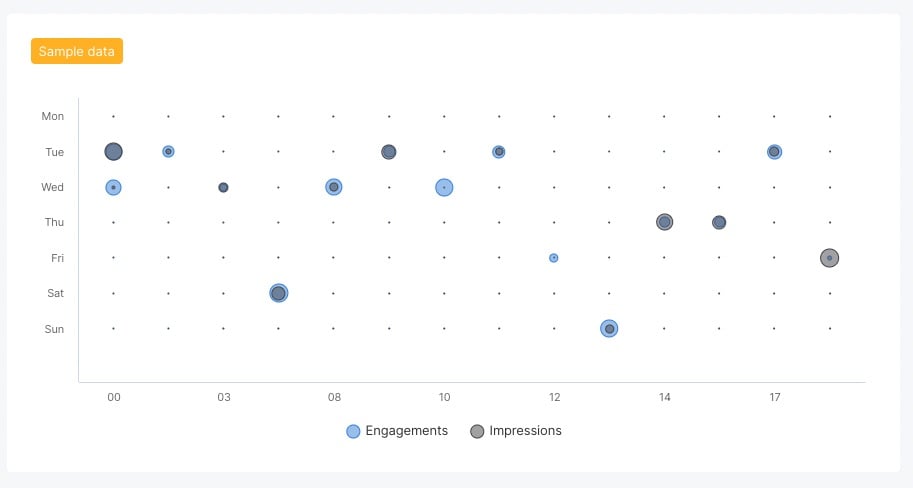
This metric will help you identify the days and hours to tweet to optimize your impressions and engagement.
4 ways to increase impressions on Twitter
Now that you know how to track and measure your impressions on Twitter, you can put your insights to work to increase your impressions and influence engagement. Here are 4 ways to boost your impressions.
1. Create important connections
The best chance to increase your impressions is to interact with your audience. Here’s how:
- Connect with relevant brands. Connect with brands that complement your own. For example, if you’re in the shoe fashion industry, you can retweet a complementary brand’s content or you can tag them in a post where you pair your shoes with their sportswear. Virtual networking can increase your impressions and strengthen brand awareness.
- Consistent replies. Follower interaction is an important way to increase Twitter impressions. Reply to your followers’ comments, follow some of your top followers, and be consistent in your communication to boost your impressions.
- Network with thought leaders. Understand who are the top influencers in your niche and engage with them. Be genuine in your approach as you interact with their content. The more you comment with authenticity and retweet relevant content to your own audience, reciprocity will follow. They may follow you, share your content or both.
2. Vary your content with the 80/20 rule
Vary your content to identify the tweets that work best.
Connect with your audience on an emotional level. They’re not following you because of a brand name, but for the values you represent. Therefore, use the 80/20 rule to generate 80% non-branded content and 20% branded. Most of your social media will be about resolving their pain points. Put your ideal customer first in every tweet and they’ll be keener to interact and retweet, which will increase your impressions and engagement.
Some ways to vary your content include:
- Ask for relevant action. If you’re in the shoe industry, you could ask your followers to share a photo of their favorite pair of shoes and explain why.
- Ask a relevant question. Either ask a straightforward question or use a poll, like, “Have you ever owned a pair of blue suede shoes? Yes or No?”
- Alternate between media and text. If you’re always tweeting text, try using images with text, images without text, or videos.
When you track which posts garnered more impressions with quintly’s impression metrics, then you can replicate with similar tweets to up your content views.
3. Choose quality over quantity
Publish quality content to increase Twitter impressions. Here’s how to ensure excellence in all your tweets:
- Enable preview images. If you’re sharing blog posts, make sure you’ve enabled preview images. The combination of images and text may be more alluring than text alone.
- Post clear images. Post working videos and clear, good-looking images. No one will interact with broken links or grainy graphics.
- Use hashtags wisely. Choose one or two trending hashtags rather than occupying the 280 Twitter character limit with 10 hashtags.
- Create less, not more. Publish less to avoid spamming your followers and distance one tweet from another throughout the day. No one wants to see 50 tweets from the same account in a few hours. And to find the right number of tweets per day, use quintly’s Daily Average Impressions per Tweet.
4. Time your tweets toward success
Tweeting at the right time on the right day can be a game-changer for increasing your Twitter impressions. As you understand what type of content gets the most impressions, plan your timing with quintly’s tools for greater impact, like Impressions by Time and Impressions/Engagement Comparison.
Knowing when your audience is most engaged will allow you to time your tweets to perfection.
Track and tune your Twitter impressions with quintly
Now you know what Twitter impressions are and how to track and increase them for greater engagement potential.
Soon you’ll see those Twitter impressions rise as you create quality content, connect with your audience, and tweet at the right times and days.
And when you use a specific social media analytics tool like quintly, you can discover quickly the best tactics to reach your social media campaign goals with ease.
Find out how quintly can help you dive deep into Twitter analytics and measure the impact of your Twitter marketing using rich data insights.

Join the conversation. Leave us a comment below!